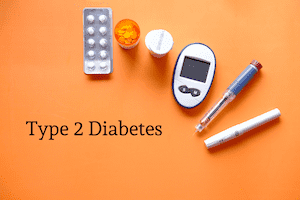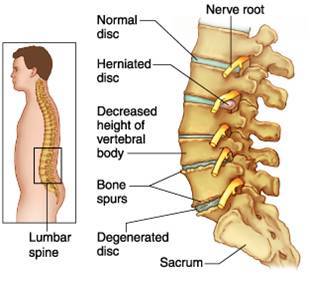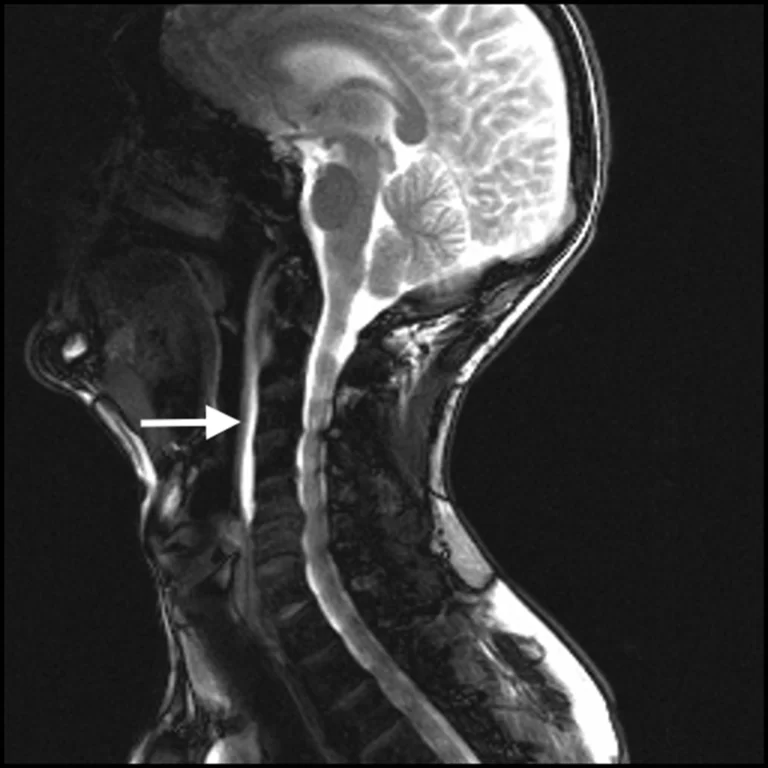Type 2 Diabetes
Definition
The most common form of diabetes, known as type 2, is a condition caused by high levels of blood glucose, or blood sugar. Your primary energy source, blood glucose, comes primarily from the food you eat.
The pancreas produces the hormone insulin, which helps the digestion of glucose by your cells for use as energy. When you have type 2 diabetes, your body either produces too much insulin or uses it incorrectly. Then, not enough glucose enters your cells, and too much remains in your blood.
Causes of Type 2 Diabetes
The hormone insulin is produced in the pancreas by unique cells known as beta cells. The stomach is behind and below the pancreas. For blood sugar (glucose) to enter cells, insulin is necessary. Glucose is stored inside the cells and used as energy later on.
Insulin isn’t properly taken in by your adipose, liver, or muscle cells when you have type 2 diabetes. Insulin resistance is the term for this. As a result, these cells can’t receive glucose for energy storage.
Sugar levels in the blood rise when it is not capable of entering cells. We refer to this as hyperglycemia. The glucose cannot be used by the body as fuel. Type 2 diabetes symptoms result from this.
Typically, type 2 diabetes develops slowly over time. When they are diagnosed, the majority of those who have the illness are overweight or obese. Your body has more difficulty using insulin correctly if you have more fat on you.
Those who are not overweight can also develop type 2 diabetes. This is more common in senior citizens.
Genes and family history are associated with type 2 diabetes. Your risk of developing the illness is made higher by a lack of exercise, an unhealthy diet, and excess weight around the waist.
Pathophysiology
The autoimmune, biological process that destroys pancreatic beta cells occurs in type 1 diabetes. Strong genetic predispositions exist for T1DM. Roughly 40–50% of the familial association of T1DM is thought to be caused by the major histocompatibility complex (MHC), commonly referred to as human leukocyte antigens (HLA). The polymorphisms of class II HLA genes encoding DQ and DR4-DQ8, along with DR3-DQ2, which are present in 90% of T1DM patients, are the important determinants.
Latent autoimmune diabetes in adults is another form of Type 1 diabetes. It occurs in adulthood, frequently starting more slowly.
Insulin resistance and beta-cell dysfunction are connected with type 2 diabetes (T2DM). Insulin secretion first increases in response, keeping blood glucose levels within the normal range. A high blood sugar level is caused when the production of insulin is not enough to maintain glucose homeostasis due to changes in beta cells brought on by the progression of the disease.
The majority of T2DM patients are obese or have greater body fat percentages, which are primarily located in the abdomen. By adipokine dysregulation and increased FFA release, among other inflammatory processes, this adipose tissue itself leads to insulin resistance. The risk of getting type 2 diabetes is further increased by inactivity, dyslipidemia, and previous GDM in individuals with hypertension.
Symptoms of Type 2 Diabetes
Initially, people with type 2 diabetes often have no symptoms. For many years, they may not have any symptoms. When type 2 diabetes develops slowly, some people already have damage to their kidneys, eyes, or nerves when they are initially diagnosed.
When blood sugar levels are high, early signs of diabetes can include:
- infections of the skin, kidneys, bladder, or other organs that heal slowly
- Tiredness
- Feeling of hunger
- An increase in thirst
- raised urinary level
- blurry vision
Diagnosis
If the test result of your blood sugar is more than 200 mg/dL or 11.1 mmol/L, your doctor may think that you have diabetes. One or more of the following tests need to be performed to confirm the diagnosis.
- blood glucose level after fasting — When a person’s blood sugar level is 126 mg/dL (7.0 mmol/L) or above at both times when they are in their normal state of health, diabetes is diagnosed.
- Hemoglobin A1c (A1C) test: If the test has a result of 6.5% or higher, diabetes is diagnosed.
- Oral glucose tolerance test: Two hours after taking a special sugar drink, a glucose level of 200 mg/dL (11.1 mmol/L) or above is suggestive of diabetes.
Screening for diabetes is recommended for:
- Children who are overweight and have other diabetes risk factors, beginning at the age of 10 and continuing every 2 years
Adults who are overweight or obese (BMI of 25 or higher) should begin at age 35 and repeat every 3 years. - Overweight women who want to get pregnant and who also have other risk factors, such as high blood pressure
- All people beginning at age 35, must be repeated every three years, or earlier if the individual has risk factors like high blood pressure or has a parent, sister, brother, or other family member who has diabetes
- You have to work closely with your provider if you have been diagnosed with type 2 diabetes. See your healthcare provider as directed regularly. Maybe once every three months.
You and your healthcare provider can monitor your diabetes and avoid complications by taking the following checkups and tests.
- Check your legs and feet’s joints, skin, and nerves.
- Check for diabetic nerve damage if you notice numbness in your feet.
- At least once a year, get your blood pressure checked; a good result is 140/80 mm Hg or lower.
- Have your A1C checked every 6 months if your diabetes is properly controlled. If you don’t have good control over your diabetes, get tested every three months.
- Check your triglyceride and cholesterol levels once a year.
- Make sure your kidneys are functioning properly by getting testing (serum creatinine and microalbuminuria) at least once a year.
- See your eye doctor every year, or regularly if you show symptoms of diabetic eye condition.
- Visit the dentist for a complete cleaning and examination every six months. Make sure that your dental hygienist and dentist are aware that you have diabetes.
Treatment of Type 2 Diabetes
The primary goal of treatment of Type 2 Diabetes is to lower the abnormally high level of blood glucose. The long-term goal is to avoid complications. Diabetes has a chance to cause these health issues.
Eating well and being active is the most important lifestyle approach to treating and managing type 2 diabetes.
Everyone who has diabetes needs to be properly informed about the best ways to control their condition and given support. Consult a dietician and a certified diabetes care and education specialist (CDCES) with your healthcare physician.
Learn These Skills
Living well with diabetes can be achieved by developing diabetes management skills. These abilities aid in avoiding medical issues and the need for care. Among the skills are:
- How to measure and record your blood sugar
- How much, what, and when to eat
- How to control your weight and raise your exercise level safely
- How to take prescription drugs when necessary
- How to identify and manage blood sugar levels both high and low
- Managing sick days
- Where to buy medicines for diabetes and how to store them
Learning these skills could take several months. Continue your education regarding diabetes, its effects, and managing the condition to a healthy level. Keep informed on new findings and medical treatments. Verify that the information you are receiving is coming from trustworthy sources, such as diabetes educators and your healthcare professional.
Management of blood sugar
You can figure out how effectively you are controlling your diabetes by measuring your blood sugar yourself and recording the findings. To find out how often to check, talk with your diabetes educator and provider.
A glucose meter is a tool used to measure blood sugar levels. Usually, a small needle known as a lancet is used to puncture your finger. You get a little drop of blood as a result. You fill a test strip with blood, then insert the strip into the meter. The meter provides you with a reading that shows your blood sugar level.
A testing schedule will be arranged for you by a medical professional or diabetes educator. Your provider will help you find a goal range for your blood sugar values. Remember the following factors:
- The majority of individuals with type 2 diabetes just need a daily blood sugar check once or twice.
- You may need only to check your blood sugar a few times a week if it is controlled.
- You can test yourself in the morning, right before dinner, and right before bed.
- When you are seriously ill or under stress, you might need to test more than usual.
- If you are experiencing low blood sugar symptoms repeatedly, you may want to test regularly.
To find out how to monitor your blood sugar, your healthcare professional might advise using a continuous glucose monitor (CGM) if:
- You have experienced an incident of very low blood sugar. You take insulin injections several times a day.
- Your blood sugar levels change rapidly.
- Every five minutes, the sensor on the CGM measures the amount of glucose in your tissue fluid by inserting it under the skin.
Healthy eating and weight control
Consult your healthcare providers regularly to find out how much protein, fat, and carbohydrates you should be eating. Meal plans must include meals you enjoy and be personalized to your lifestyle and habits.
Maintaining a healthy weight and eating a balanced diet are very important. After reducing weight, some persons with type 2 diabetes can stop taking their medications. This doesn’t mean that they will no longer have diabetes. Their diabetes continues.
Those who are overweight and whose diabetes cannot be properly controlled with food and medication may want to think about bariatric surgery.
Medications for diabetes
Your doctor may recommend medication if diet and exercise are enough to maintain your blood sugar levels at normal or close to normal. Your healthcare provider can advise you to take multiple medications because they all work in different ways to control blood sugar levels.
The following is a list of some of the most popular kinds of medications. They can be injected or taken orally.
- injectable medications (GLP-1 agonist)
- Acid sequestrants for bile
- Meglitinides
- Biguanides
- Sulfonylureas
- DPP-4 agonists
- Thiazolidinediones
- Inhibitors of alpha-glucosidase
If some of the medicines mentioned above fail to control your blood sugar, you may need to take insulin. Insulin is mainly injected subcutaneously via a pump, syringe, or insulin pen. Insulin that is inhaled is an extra variety.
Foot Care
Patients with diabetes are more likely than non-patients to experience complications with their feet. Nerve damage is caused by diabetes. As a result, your feet can get less responsive to pain, pressure, heat, and cold. A foot injury could go unnoticed until there is severe damage to the skin and tissue beneath or until you develop a serious infection.
Blood vessels can also be damaged by diabetes. Deeper skin sores (ulcers) can develop from minor skin fractures or sores. The damaged limb may need to be amputated if these ulcers do not heal or get larger, deeper, or infected.
To avoid foot issues:
- Avoid using tobacco products,
- Boost your blood sugar regulation.
- find out if you have nerve damage, and have your foot examined by your physician at least twice a year.
- Ask that your healthcare professional examine your feet for problems like hammertoes, bunions, or calluses. In order to prevent ulcers and skin damage, treatment is required.
- Every day, examine and take care of your feet or shoes. If you already have foot issues or damage to your blood vessels or nerves, this is important.
- Athlete’s foot and other mild infections should be treated immediately.
- Apply moisturizing cream on dry skin.
- Make sure you’re wearing suitable shoes. Find out from your provider which kind of shoe is best for you.
Differential Diagnosis
The following diseases have been added to the list of differential diagnoses for diabetes mellitus because they show similar symptoms:
- symptoms brought on by drugs, such as pentamidine, corticosteroids, and neuroleptics.
- genetic abnormalities in the activity of insulin and beta-cells
- Syndrome X
- metabolic syndrome
- Virus Infection
- Endocrinopathies: pheochromocytoma, hypothyroidism, acromegaly, Cushing disease.
- Conditions involving the exocrine part of the pancreas, such as cystic fibrosis and pancreatitis, and iron overload complications (hemochromatosis).
Prognosis
Since diabetes mellitus (DM) is linked to an elevated risk of atherosclerotic cardiovascular disease (ASCVD), lowering blood pressure, taking statins, exercising regularly, and quitting smoking are all critically important to minimize risk. While it varies greatly, those with type 2 diabetes. generally have an excess death rate that is 15% greater.
Vascular complications can now be effectively managed, leading to a reduction in morbidity and mortality, with the use of drugs for hyperglycemia, ACE/ARB therapy to lower LDL cholesterol, aspirin for secondary prevention, and other antihypertensive drugs.
Complications
Diabetes developing over time can result in major health issues:
- You may have cataracts, light sensitivity, and difficulty seeing, especially at night. You might get blind.
- Skin infections and sores can occur on your feet. It might be necessary to amputate your foot or leg if the wounds do not heal adequately. Infections can also bring on skin pain and itching.
- It may be more difficult to control your blood pressure and cholesterol if you have diabetes. A heart attack, stroke, and other issues may result from this. The blood supply to your feet and legs may become less easy.
- Your body’s nerves may suffer injury that results in numbness, tingling, and discomfort.
- You may experience difficulties with digesting food because of nerve damage. You can experience weakness or difficulty using the bathroom. Men who suffer from nerve damage may find it more difficult to erection.
- Kidney disease can result from high blood sugar and other complications. Your kidneys may not function as well as they previously did. You could even need dialysis or a kidney transplant if they fail to function.
- Your immune system may be weakened by high blood sugar. This may increase your risk of infections, particularly fungal and skin infections that can be severe.
Patient Education
Patients need to be informed about the importance of controlling their blood sugar levels to avoid diabetes-related problems. Exercise and nutrition control are two aspects of lifestyle management that need to be addressed.
Self-monitoring blood glucose levels is an important means for people to assume responsibility for managing their diabetes. It is important to calculate lipid, glucose, and glycated hemoglobin levels regularly.
Patients should be informed by medical professionals about the symptoms of low blood sugar, which include a rapid heartbeat sweating, and confusion, as well as the necessary treatment, which involves consuming 15 to 20 grams of carbohydrates.
It is important to encourage patients to give up smoking. It is necessary to bring out the need for routine foot care and checkups of the eyes.
When to contact a healthcare professional
As soon as possible, use 911 or the local emergency number if you have:
- Chest pain or pressure
- Fainting, confusion, or unconsciousness
- Seizure
- Shortness of breath
- Red, painful skin that is spreading quickly
- Seizures, low blood sugar coma, or high blood sugar levels coma are examples of rapid worsening of these symptoms into emergency conditions.
Also, contact your provider if you have:
- You feel Pain, numbness, or tingling in your feet or legs
- Problems with your eyesight
- Sores or infections on your feet
- Extreme thirst, blurry sense of vision dry skin, weakness or tiredness, and frequent urination are symptoms of high blood sugar.
- Symptoms of low blood sugar (weakness or fatigue, trembling, sweating, irritability, trouble thinking, fast heartbeat, double or blurry vision, uneasy feeling)
- Frequent feelings of depression or anxiety
FAQ
How serious is type 2 diabetes?
Type 2 diabetes raises your risk of heart disease, stroke, foot issues, kidney disease, and eye disorders. It may be recommended that you take more medicines, such as anti-hypertensive medications to treat high blood pressure, to lower your chance of developing other serious health disorders.
Can someone with type 2 diabetes live a normal life?
A person’s life expectancy may be shortened by issues related to type 2 diabetes if they are diagnosed at a younger age. Still, a person with type 2 diabetes has a reasonable chance of surviving as long as a person without the disease if they use proper management techniques.
Which foods are beneficial for those who have type 2 diabetes?
If you have type 2 diabetes, there are no foods you cannot eat, but you must be careful about certain meals. Eat a variety of foods, such as fruits, vegetables, and certain starchy meals like rice, pasta, and potatoes. Lower your daily intake of salt, fat, and sugar.
Do people with type 2 diabetes take insulin?
When type 2 diabetes is first diagnosed, most patients get treatment that includes diet, exercise, and oral (pill or tablet) medicine. Some people later require injectable treatment, such as insulin, if oral medicine is not effective in controlling their blood sugar levels.
Is type 2 diabetes permanent?
Studies show that some people can overcome type 2 diabetes, even though there is no known cure for the condition. You may be able to achieve and maintain normal blood sugar levels without medicine by making dietary adjustments and losing weight. This doesn’t mean that you have fully recovered. Diabetes type 2 is a long-term medical condition.
References
- Type 2 diabetes: MedlinePlus Medical Encyclopedia. (n.d.). https://medlineplus.gov/ency/article/000313.htm
- Goyal, R. (2023, June 23). Type 2 Diabetes. StatPearls – NCBI Bookshelf. https://www.ncbi.nlm.nih.gov/books/NBK513253/
- Type 2 Diabetes. (2023, November 21). National Institute of Diabetes and Digestive and Kidney Diseases. https://www.niddk.nih.gov/health-information/diabetes/overview/what-is-diabetes/type-2-diabetes








7 Comments